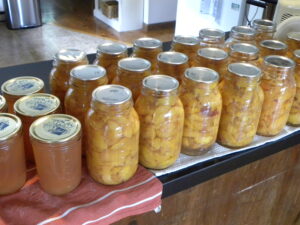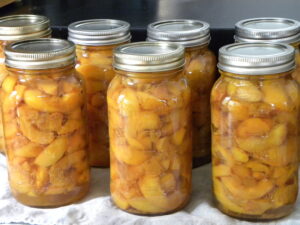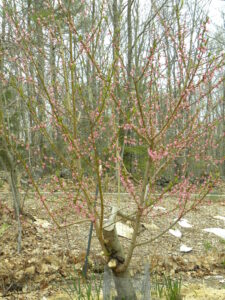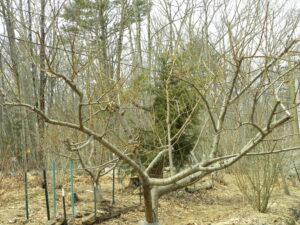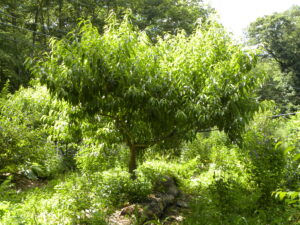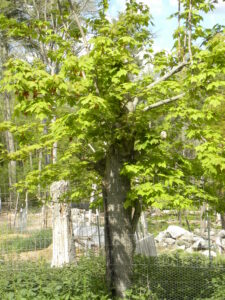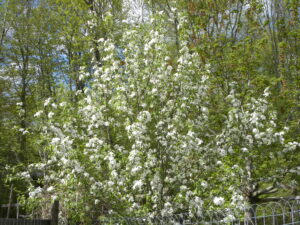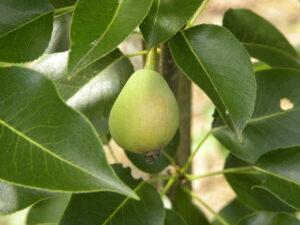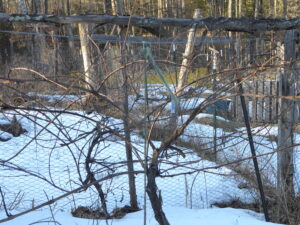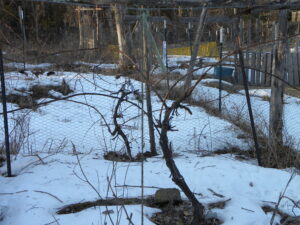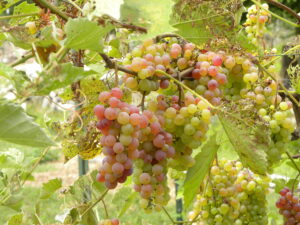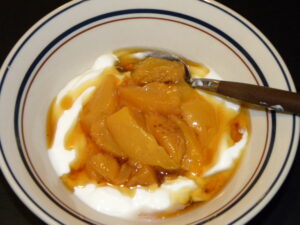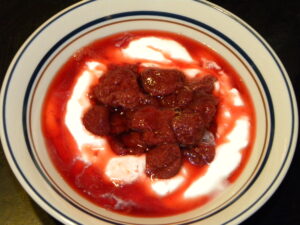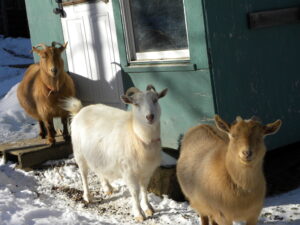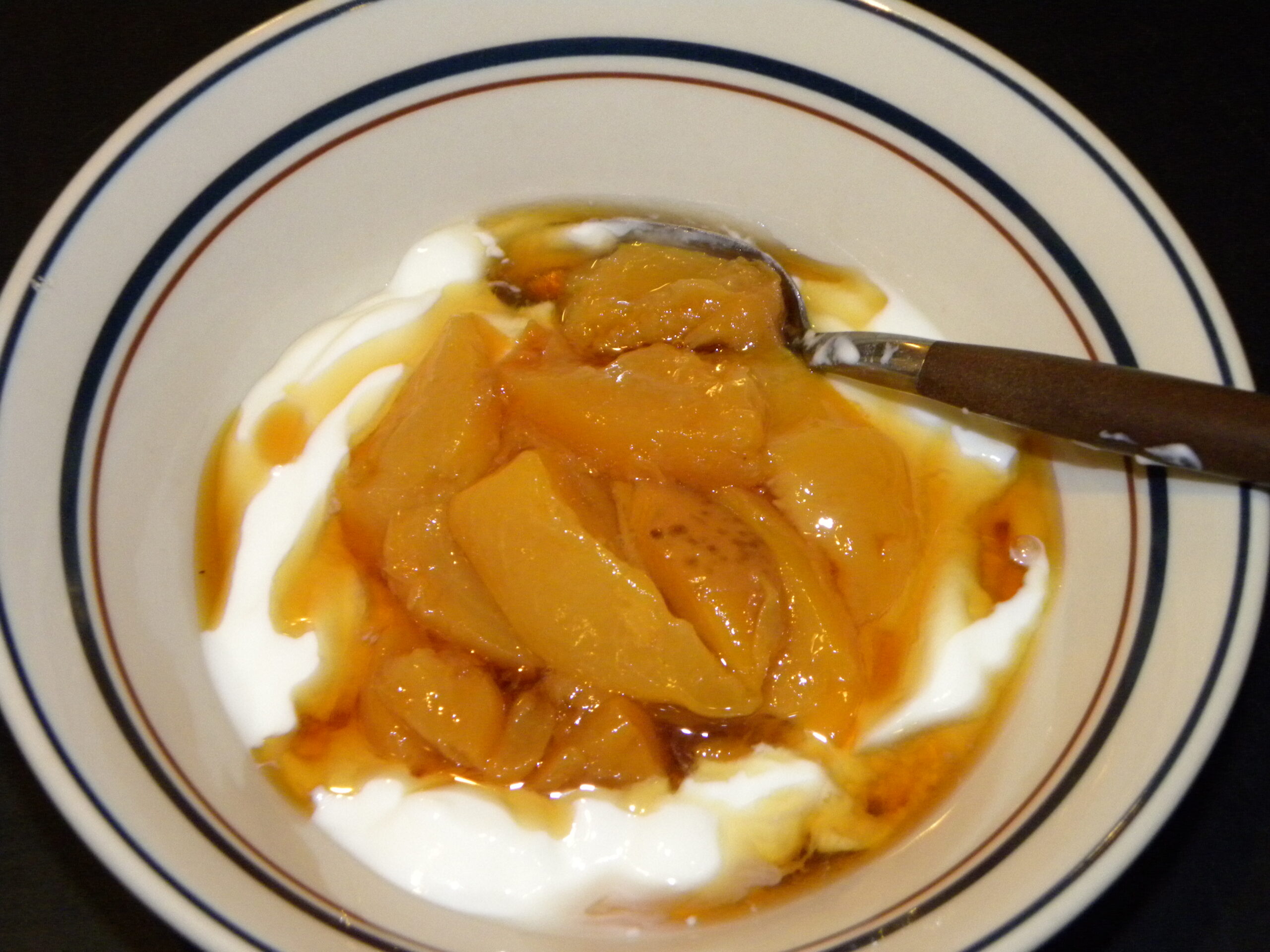If you’ve been a regular reader of this blog, you will know how invested I am in food preservation. In any place with such a short growing season the best way to be a year round local food eater is to can, dry, freeze, root cellar and grow long keeping foods. So, starting in July, bringing in and putting up the harvest is one of my main concerns. In fact, I have a goal of preserving something every day.
Here’s what that looked like for me for the week of August 12 2024.
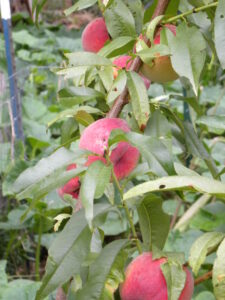
Ripening Peaches
Monday
More peaches are ripening! We brought in 32 pounds mostly from our Redhaven tree. We cut and cooked them but it wasn’t quite enough to justify heating the water to can. There is a big pot of them in the fridge to combine with tomorrow’s harvest.
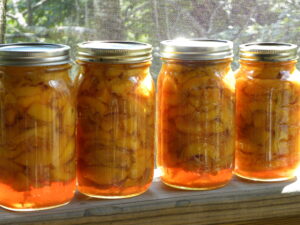
Canned Peaches
Tuesday
Canning! Another 30 pounds of Redhaven and Starfire peaches came in to cut, cook and water bath process. Three rounds for 21 quarts to store. A peach processing session like this takes up most of my day.
Wednesday
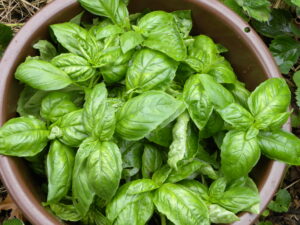
Basil
The basil has been gorgeous and lush. I cut a pound for making pesto. The garlic and salt is also ours – the olive oil is not local! I skip the pine nuts and cheese for my version. Since tomatoes don’t agree with my digestive system, I use pesto instead of red sauce in everything. So it’s important to have enough for a year’s supply. I freeze 3/4 pint jars of it, and this hour long session yielded 5 of those.
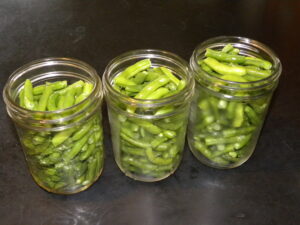
Beans Prepped for the Freezer
Thursday
Our string beans were a little slow to get started but now here they are, 5 pounds at a time. Our Blue Lake pole beans are especially prolific at the moment. In a couple of hours, I picked, snapped, blanched, and froze a few pounds for future three bean salads. In the past I used small plastic freezer bags but glass wide mouth pint jars work great and hold the right amount for each round of salad making. I’m always looking for ways to use less plastic.
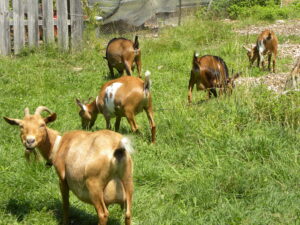
Our Milk Makers & Kids
Friday
We have 2 gallons of milk in the fridge, about five days worth. I find our raw milk is perfect for about one week so it’s time to move some along, in this case as chevre cheese. One gallon of milk equals about five half pints for the freezer and one to go straight to the fridge. I start the process of making it late at night and the cheese really makes itself overnight. I strain and jar it the next morning. I love this cheese in salads – lettuce based salads in the spring, thinly sliced cucumber salads for the summer and a wonderful beet and kale type nearly year round. I also end up with a 1/2 gallon of whey which the chickens love.
Saturday
More peaches! These are still from my three earliest ripening trees: a Lars Anderson, a Redhaven and a Starfire, all 8 or 9 years old. We’ve gotten better at pruning the trees (as I wrote in my last post) and thinning the fruit, so we have nice, big peaches. I can’t explain why the birds and squirrels have spared us this year, I know some of my local friends lost their crops. I did two more canner loads and now have 48 quarts on my shelves.
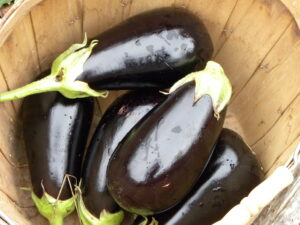
Eggplant
Sunday
The eggplant is finally kicking in. I have good years and not so good years with the eggplant. It’s too early to decide for 2024, but we did just bring in five pounds to preserve. I diced, cooked and froze them specifically for making Eggplant-Almond Enchiladas. Next time I will slice them into rounds for eggplant parmesan.
So that was my August 12-19 food preserving week. And I hadn’t even pulled out my dehydrator yet! I hope to have enough harvest and time to keep on like this for a couple of months, filling my freezers and shelves to ensure homegrown food all through the winter.
